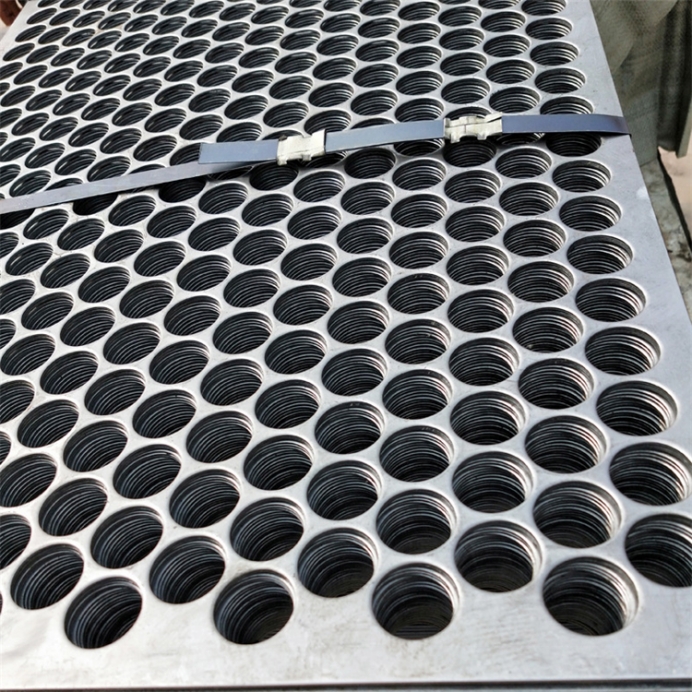The Versatility and Applications of Perforated Steel Screens
Perforated steel screens are increasingly becoming an essential component in various industries due to their unique qualities and versatile applications. These screens are made from sheets of steel that have been punched with a series of holes, resulting in a mesh-like structure that offers numerous benefits, from filtration to decoration. In this article, we will explore the characteristics, manufacturing processes, and uses of perforated steel screens across different sectors.
Characteristics of Perforated Steel Screens
One of the primary characteristics that make perforated steel screens so desirable is their strength and durability. Steel, as a material, provides exceptional toughness and resistance to corrosion, especially when treated with protective coatings. The perforation process allows for a reduction in weight without sacrificing structural integrity, making these screens both lightweight and robust.
The size, shape, and pattern of the holes can vary widely, tailored to the specific needs of a project. Perforated steel screens can have round, square, or custom-shaped holes, with various hole sizes and spacing options. This customization enables their use in a multitude of applications, from industrial filtration systems to aesthetic architectural features.
Manufacturing Process
The manufacturing of perforated steel screens typically involves several steps. It begins with selecting a suitable steel sheet, which can vary in thickness depending on the application's demands. The sheets are then fed into a punching machine where high-speed punches create the desired hole patterns. The process can be performed either cold or hot, depending on the material's requirements and the nature of the application.
After the perforation, the sheets undergo secondary processes like deburring to remove sharp edges, bending to achieve specific shapes, and surface treatments to enhance corrosion resistance
. Treatments such as galvanizing, powder coating, or painting can further improve durability and aesthetics, making perforated steel screens suitable for both functional and decorative applications.perforated steel screen

Applications of Perforated Steel Screens
1. Industrial Filtration One of the most significant applications of perforated steel screens is in industrial filtration systems. They serve as effective straining devices, enabling efficient separation of solids from liquids in various processes, including water treatment, food processing, and chemical manufacturing. The precise hole size can be tailored to filter out specific particulate sizes, ensuring optimal performance.
2. Architecture and Design In the architectural field, perforated steel screens are utilized for aesthetic purposes as well as functionality. They can be employed in building facades, creating innovative designs that allow light and air to permeate while providing privacy and reducing solar heat gain. These screens can also serve as decorative elements in interiors, adding texture and depth to walls and ceilings.
3. Acoustic Panels Perforated steel screens are also used in acoustical applications. The holes in the panels can help manage sound absorption and diffusion, making them ideal for use in auditoriums, theaters, and other venues where acoustics play a crucial role. By strategically incorporating these screens, designers can enhance sound quality while maintaining an open and modern look.
4. Safety and Security Perforated steel screens can offer safety and security solutions in various contexts. They are used as protective grilles, guards, and fencing in environments where visibility is crucial while still needing to keep undesirable elements out. Their resilience makes them suitable for industrial settings, storage units, and even residential properties.
5. Automotive and Aerospace In the automotive and aerospace industries, perforated steel screens find applications in air intake systems, exhaust systems, and structural components. Their lightweight nature combined with strength helps improve fuel efficiency and overall performance.
Conclusion
The significance of perforated steel screens cannot be overstated. Their unique properties and wide-ranging applications across various industries highlight their versatility and functionality. Whether for industrial filtration, architectural design, or safety measures, these screens exemplify how a simple design can lead to innovative solutions in everyday challenges. As industries continue to evolve, the demand for perforated steel screens is likely to grow, showcasing their importance in modern technology and design.
-
Versatility of Expanded Aluminum Metal for Various Applications
NewsMay.19,2025
-
The Geometry of Steel Gratings: Why It Matters
NewsMay.19,2025
-
Reinforcement Applications of Perforated Mesh in Masonry
NewsMay.19,2025
-
Essential Tools for Installing a Deck Mesh Railing
NewsMay.19,2025
-
Anti-Slip Flooring Made with Stainless Expanded Mesh
NewsMay.19,2025
-
Adjustable Steel Grating for Uneven Terrain
NewsMay.19,2025
Subscribe now!
Stay up to date with the latest on Fry Steeland industry news.

